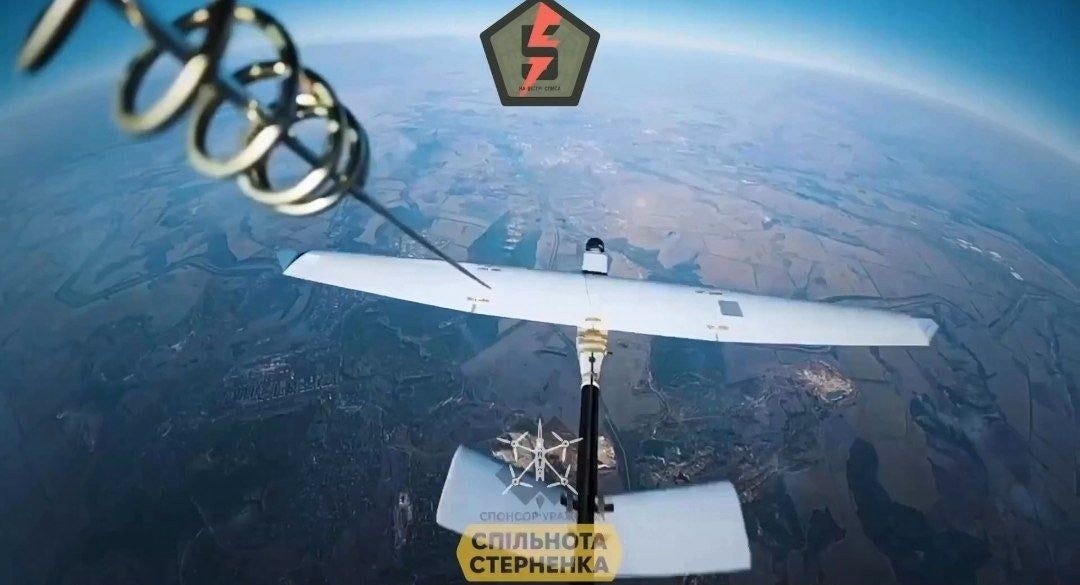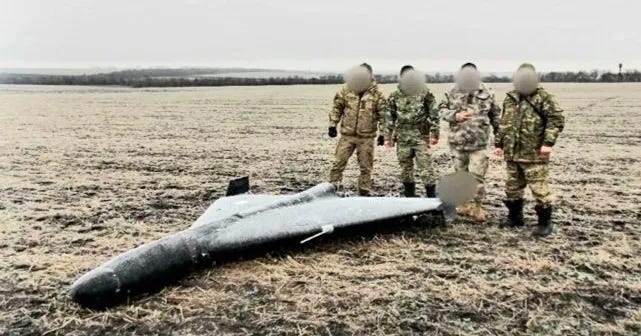365,000 interceptor drones is a lot of interceptor drones. But that’s how many it’s going to take for Ukraine to match, one for one, the number of Shahed attack drones Russia is about to launch at Ukrainian cities.
Struggling for months to counter Russia’s escalating bombardment of Kyiv and other cities—a bombardment increasingly led by the 440-pound Shaheds—Ukraine has finally settled on a strategy.
It’s going to build inexpensive interceptor drones designed to ram incoming Shaheds—and it’s going to build a lot of them. “They know our request: 1,000 drones a day,” Ukrainian Pres. Volodymyr Zelensky said while visiting a new interceptor drone production line somewhere in Ukraine on or before Saturday.
Zelensky didn’t pull that number out of thin air. Robert Brovdi, a famous Ukrainian drone team leader who recently assumed command of the Ukrainian military’s independent drone branch, warned that the Shahed problem will probably get worse before it gets better as daily Shahed production increases to at least 1,000 units.
This is up from the several hundred Shaheds Russian industry currently churns out every day. “I am not trying to scare anyone,” Brovdi wrote. His assessment, he stressed, is based on hard military intelligence. He stressed that Ukrainians should “turn the rivet with a cool head.”
In other words, Brovdi urged, get to work with a clear sense of the sheer scale of the problem. “Immediately,” he urged.
The problem with the Shaheds is that they’re cheap. As Russia scales up production of the Iranian-designed drones at its sprawling factory in Yelabuga, 800 miles from Ukraine, the basic propeller-driven, satellite-guided Shahed is getting cheaper. One drone may now cost less than $50,000, down from $200,000 a few years ago.
By contrast, a traditional air-defense missile such as the U.S.-made Patriot might cost $1 million. A German-made IRIS-T costs $400,000. Ukraine simply can’t stockpile enough of the pricey missiles to shoot down all the Shaheds. Global annual Patriot missile production might exceed 600 missiles a year, but only barely.
Now consider that a single Russian air raid on July 12 involved no fewer than 597 Shaheds and decoy Shaheds. The Ukrainians shot down or jammed 577 of them. Twenty hit. But the cost of the interceptions likely far exceeded the cost of the attack.
As early as June, the Ukrainian air force identified inexpensive interceptor drones as the best solution to this problem. “Assignment number one: the cultivation and scaling of means that already work effectively,” the air force stated. “Most of all: increasing the number of unmanned aerial vehicle interceptors.”
Many interceptors
There are many different types of interceptor drone, and they normally cost between $1,000 and $5,000 a copy. Most of them work the same way. Steered by an operator wearing a virtual reality headset, the propeller-driven interceptor accelerates toward an incoming Shahed at a range of just a few miles and an altitude as high as 10,000 feet—and rams the enemy drone at a combined closing speed of nearly 400 miles per hour.
“Those drones I think are going to make a big impact because they’ve proven capable of shooting down Shaheds and they’re much cheaper than a Shahed,” noted independent analyst Andrew Perpetua.
The interceptors are also multi-use, in a way. “If they hit then they explode,” Perpetua said, “but if they miss, they’re reusable.”
There are ways Russia can counter the interceptors, primarily by flying their own drones higher and faster. Newer jet-powered Shaheds travel as fast as 370 miles per hour—nearly double the speed of the prop-driven models—and also climb higher. The effectiveness of the current interceptor models “drops sharply against high-speed, jet-powered Shaheds,” explained Ukrainian electronic warfare developer “Alchemist.”
Interceptor drones also “have limited flight time, are sensitive to weather conditions and [their] battery efficiency declines in cold weather,” Alchemist noted.
But Ukraine can build a lot of them, fast, and erect a virtual wall of interceptors between the Shaheds and Ukrainian cities. Yes, some of the better Shaheds may still get through … for now. But Ukraine’s drone developers are already hard at work on improved interceptors.
The rapid ramp-up in interceptor drones is only possible because Ukrainian industry has already scaled up to produce several million small first-person-view quadcopter attack drones as well as 30,000 long-range airplane-style attack drones this year alone.
365,000 interceptor drones in a year is an awful lot of drones … but it still represents less than 10% of overall drone production in Ukraine. So Zelensky’s 1,000-interceptors-a-day goal is entirely realistic.
Read more:
From a Ukrainian Expert: a Guide to Swatting Down Shahed Drones
Russia’s Shahed attack drones are relentlessly pummeling Ukrainian cities. Defeating the 440-pound, propeller-driven drones, each of which ranges thousands of miles with a 200-pound warhead, is “the highest priority” in Kyiv, according to Taras Tymochko, a representative of the Ukrainian Come Back Alive foundation.



